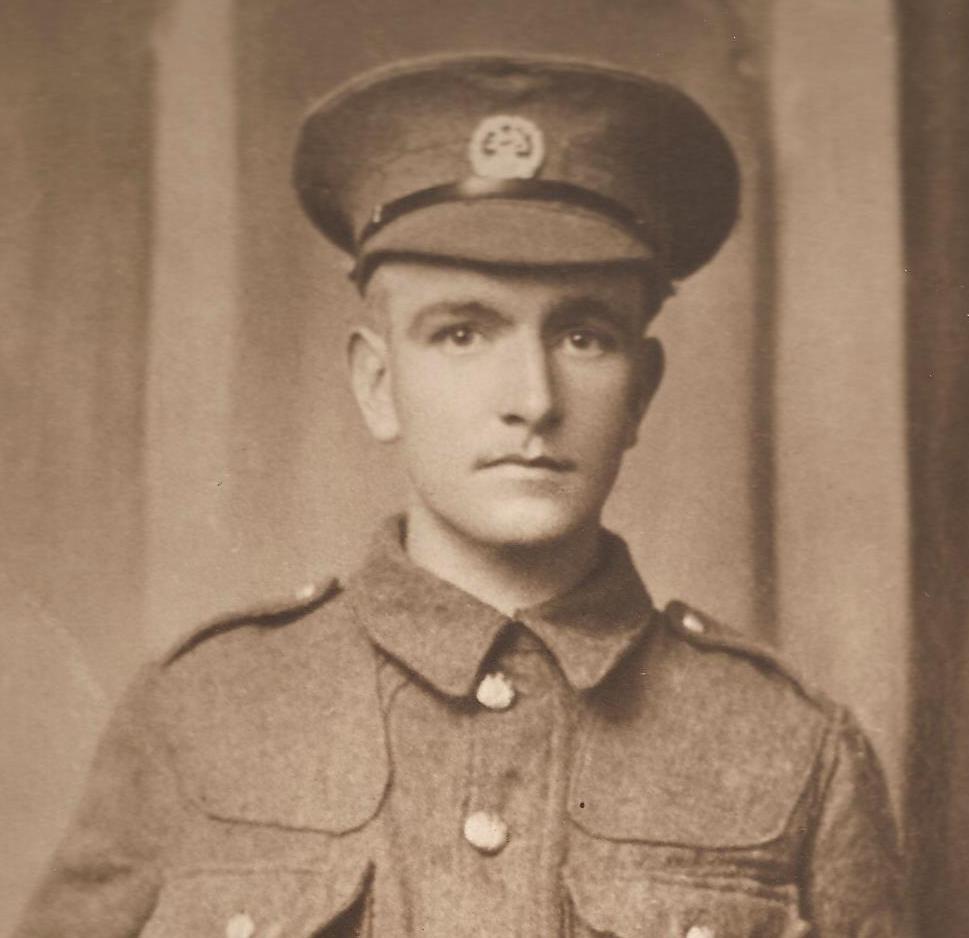Henry Reginald Hopkins, was born in April/May 1894 in Preston Candover. His mother Ellen Hopkins, came from Ellisfield and was born in 1876. She married Arthur Kimber, a farm labourer in Preston Candover in November 1895. They were all living in the village at the time of the 1911 census, Henry Hopkins with his mother, stepfather and several step-sisters. He was working as a carter on a local farm at that time. He probably joined up at the beginning of the war when he was 20, but we need to do more research into his military career. If anyone recognises the cap badge that could be a useful start. We are grateful to Beryl Chivers for the photograph of Henry Hopkins, her uncle.
Thomas William Hermon MM (2315), was a Lance Corporal, in the Oxford and Bucks Light Infantry, when he was awarded the Military Medal for gallantry, probably during the battle of the Somme in 1916. He died of wounds on 24 August 1916 and Buried St Sever Cemetery, which lies on the southern outskirts of Rouen. Rouen was a major army camp/supply depot and the base for several army hospitals just a few miles inland from Le Havre – one of the major disembarkation ports for British and Commonwealth troops. Many war casualties were brought to Rouen before being shipped back to the UK. but, sadly, many died of their wounds before they could leave France. St Sever Cemetery has 3,080 graves and such was the mass of casualties it became necessary to build an extension which holds the graves of 8,647 men. Thomas was buried in the original St Sever Cemetery.
The Ox and Bucks L.I. were fighting around the Somme during August 1916, and in particular in the infamous battle of Delville Wood. But they were also engaged in the Battle of Ancre and the unsuccessful attack at Fromelles which was supposed to be a diversionary attack during the Somme battle. We don’t know Thomas’s battalion number which is crucial to pinning down where exactly he was when he was mortally wounded. The records state that the Ox and Bucks L.I. raised 18 battalions. They fought in 59 battles during the War, won two V.C.’s, and lost 5,880 men.
The fact that Thomas won the M.M. indicates that he was an incredibly brave chap. The medal was only instituted in 1916, so it is likely he won his medal in the earlier stages of the Somme battle. We hope to find the date of his medal citation in the London Gazette and through searches of the National Archives at Kew, or the Regimental Museum, we may be able to find out which battalion he served with.
But Thomas Hermon was actually born in about 1892 in Goring, Oxfordshire. and at his death his parents were living in Henley on Thames, which raises the question of why is he commemorated in Preston Candover? Was he working here when he was called up?

